- Article
debunks some myths associated with Prithviraj Chauhan for e.g. Chauhan forgave
Ghori multiple times, he was a fatso etc.
The memory of Prithviraj Chauhan has for long been a victim
of especially vicious attempts, because of its resilience and motivation
factor.
History is a favourite target of
social engineering propaganda. For any new poison to be introduced in the
popular psyche and for any alteration in mass memory. It needs a vacuum, one
that arrives with the destruction of or distortion in the existing memories.
The memory of Prithviraj Chauhan
has for long been a victim of especially vicious attempts, because of his
resilience and motivation. Today we try to dispel
some of these falsehoods.
Myth1-Magnanimous (silly?) Prithviraj caught and
pardoned Ghori multiple times
This myth has excessive
percolation in the mainstream. As if neither Prithviraj nor his ministers and
advisors had any political acumen. Moreover, it also insults the intelligence
of the wily Shahabuddin Ghori that he kept on coming and getting defeated like
a thick-head. Facts of history are alien to these insinuations.
Different sources give different numbers for these so-called ‘victory & pardon’ engagements, going as high as 23.
The first recorded
battle where young Prithviraj Chauhan participated, involved cutting the heads
of enemy soldiers and decorating the torana (upper deck of an entrance) of
Ajmer fort with a garland of those heads.
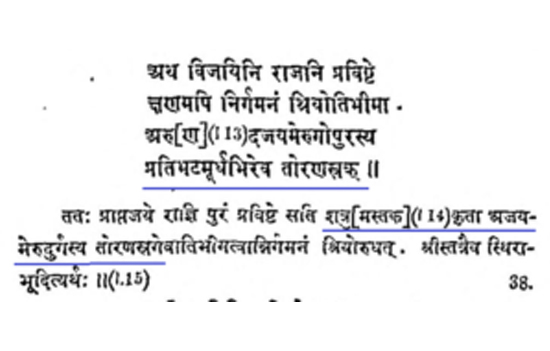
1 It also involved the arrest of the royal ladies of the enemy camp to prevent further rebellion.
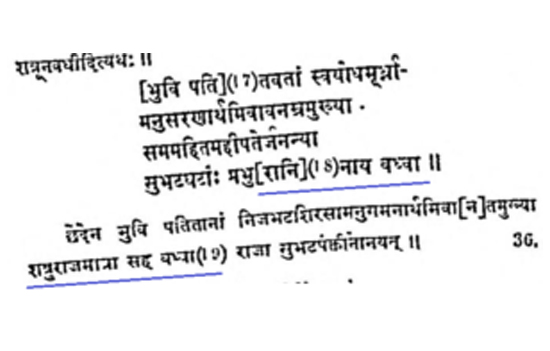
2 A few years later, we see Prithviraj conducting a night raid on the Kingdom of Abu/Chandravati.
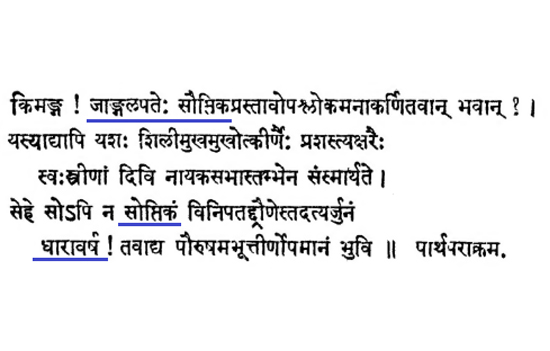
3 All these actions expose the baseless stereotypes we’ve allowed to mushroom around the historical Prithviraj Chauhan. The man was plenty aggressive in setting examples and was fluid in strategy against enemies when the situation demanded it.
After this, it is hard to imagine that Prithviraj was naïve and so left Ghori alive. But we must remember that all Indian sources concur on Prithviraj releasing a captive Ghori.
It has happened only
once and our extolling poets have raised the numbers per their liking. Before
we go aha! and resume criticizing, observe that the same sources tell us that
this pardon was for Ghori at the cost of war indemnities and a promise of
paying regular tribute in future, for which an officer used to visit Ghazni
(Sur Singh Paramara of Dahala, followed by Pratap Singh).
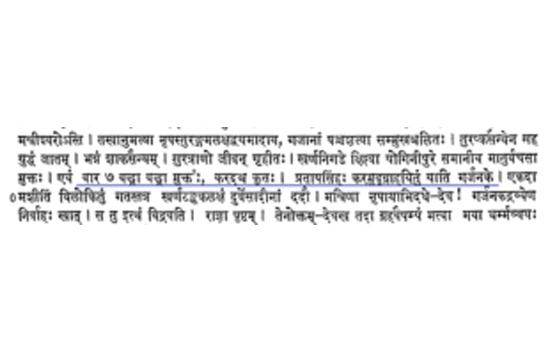
4 This finds further corroboration. Colophon of the Kalpasutra, as well as the Phalodi Mata temple renovation’s inscription, 5 states that:
Dahala (Dahalamandala near Jabalpur, M.P.) country’s King was a Madhudeva Paramara. On the command of Prithviraj Chauhan, Madhudeva’s valorous son Sur Singh went to Ghazni for tax collection. In a dispute with them, he single-handedly killed 74 well trained Ghazni warriors before falling a hero.”
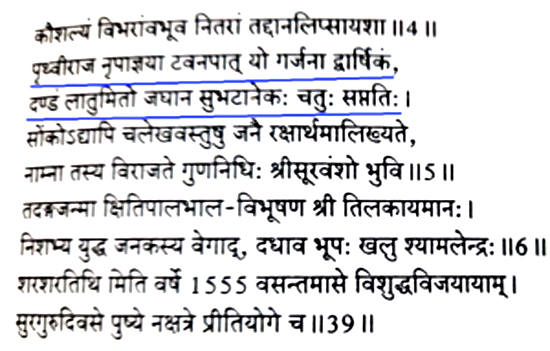
The description in Hammir Mahakavya chapter 3 also takes us to a similar conclusion as Ghori was tied and had to literally ‘bend his knee’ to save his life.
It wasn’t some out of place magnanimity by which Prithviraj “forgave” Ghori. Medieval norms show ample examples that when one King defeats another, mostly a random combination of the following takes place:
1) War indemnities exacted from
defeated King.
2) Some degree of vassalage
thrust upon defeated King where regular tribute is promised
3) Part of the defeated King’s territory is snatched away.
What Prithviraj did
was perfectly in line with the norms of his age. He turned Ghori into a tax-paying vassal.
There are indications of him
doing similarly in the south-east with Paramardin Chandela of Jejakabhukti
(annexing part of Jejakabhukti up to Dasharna River).
The fault lies, however, in not understanding thoroughly how the Islamic doctrine
was operating and why a radically different treatment was required for
mlecchas.
Which by the way is a wider issue
plaguing the entire society and institutional base of that era, not just
Prithviraj.
Myth1a - But let’s arm-twist this false-fed narrative further. When did this single
release of Ghori happen? Was it in the first battle of Tarain?
It wasn’t because:
1. Ghori
was badly injured but saved in that battle.
2. When Ghori intruded into Prithviraj’s territory the first outpost he captured was the fort of Sarhind. Immediately after winning Tarain-I, Prithviraj’s forces surrounded the garrison that Ghori had left in Sarhind fort. It took at least eight months before that garrison surrendered the fort. If Prithviraj had caught Ghori in Tarain-I, on-demand from Prithviraj the captive Shahabuddin would have promptly ordered his garrison for an immediate surrender of Sarhind fort. But we know that is not the case.
This pardon happened in the third
battle between Prithviraj and Ghori when Prithviraj was barely 19-20 years old.
It took place before both the Tarain battles, in 1182-83 CE around the riverbed
of Sutlej, between Multan and Bikampur. 6
It fits to now draw a
better-informed persona of Prithviraj Chauhan.
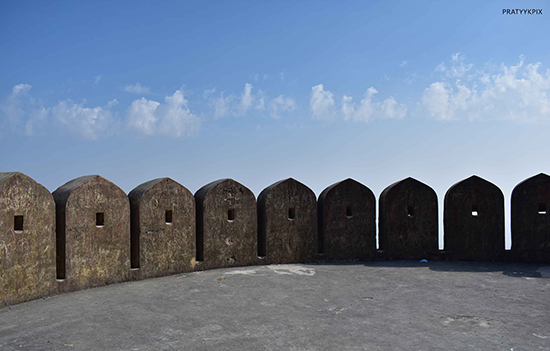 Ruins of Taragarh Fort, built by Chauhans, that overlooks Ajmer
Ruins of Taragarh Fort, built by Chauhans, that overlooks Ajmer
Prithviraj and nationalism
1. When in 1178 CE the rapacious hordes of Ghori had ravaged all from Bikampur to Nadol. Prithviraj had strongly rebuffed the Ghurid proposal to ally with them for this campaign. The Chauhan scion reiterated his ancestral vow to exterminate mlecchas. Though his kingdom wasn’t the prime target; though the Ghurid destruction took place in places that were under the vassalage of his enemy Chaulukyas/Solankis. Yet when Nadol fell, a furious Prithviraj stood up for battle. How and why the teenaged King was overruled is a separate matter.
2. In 1182-83 CE when other Hindu Kingdoms outside his reign were trampled under Ghori’s torturous feet. Prithviraj sped out of his Kingdom in full force to charge on Ghurids and capture Ghori.
Clearly, Prithviraj’s thoughts and actions weren’t reserved just for his own Kingdom.
Prithviraj and Raja-dharma
As a captive of Ghurids, Prithviraj underwent both torture and attractive offers to ‘bend his knee’. He could’ve easily accepted the vassalage of Ghori and retained his life as well as Kingdom. But would he still be able to save his people, dharma and culture? As a King, his conclusion was a resounding, No! His refusals eventually led to his death, but Prithviraj didn’t fail the test of Kshatra-dharma.
Prithviraj and awareness of Neeti
1. Politics teaches us to not concede defeat till the last moment. Sources on both sides corroborate that even in Ghurid captivity, Prithviraj kept making attempts to ‘turn the table’ on Ghori. 7
2. It is
often said that Prithviraj lacked farsightedness and broader geopolitical
awareness, especially about the mleccha threat. But when Ghori captured Lahore
in 1186 CE completing his Punjab conquest. We see an immediate churn in the
politics of Prithviraj.
1a) He repaired the relations with Tomaras of Delhi
that had gone sour since the death of Vigraharaj Chauhan (who married in
Tomaras via princess Desaladevi). Later we see Tomaras fighting beside Chauhans
shoulder to shoulder in both the battles of Tarain.
1b) With the Chalukyas/Solankis, Prithviraj ceased
the sporadic sparring of the past few years and despite having an upper hand on
them, he concluded a peace treaty. 8
Thus obtaining crucial peace on the southern front.
All this for what? Obviously,
Prithviraj had sensed a much bigger issue on the horizon. He was proven right
even before Tarain if we look at the number of Ghurid raids and govardhan
inscriptions 9 from the
late 1180s.
An immobile fatso?
Was Prithviraj “apparently an immobile fatso”, as suggested by some self-styled wisdom prophet? Let’s queue all descriptions that offer insight into the physical vigour of the famous Chauhan King.
Following is a summary of Prithviraj’s appearance and daily routine as gleaned from the contemporary text PrithvirajVijaya:
He was trained in various sciences and arts like medicine, military, mīmāsā, dharma, pourāṇika itihāsa, gaṇita, saṅgīta, and chitra-kalā. Our champion would attend physical exercises daily and frequently go on horse riding, and hunting, etc. His voice was thick, serious and his hair was curly. He had large eyes, a broad chest, and was ajānubāhu, i.e. long arms reaching up to knees. Hence, fittingly (arm-span being a factor in archery) many sources record that his skill in archery was unparalleled among other royals of north India at the time. He was proficient in controlling elephants as well. The young King’s gait was slow, with a subtle sway.” 10
People with pathological hatred want us to believe that the man who attended daily exercises, went for hunting on horseback and controlled elephants with ease was “apparently an immobile fatso”.
The author of PrithvirajVijaya also conveys that (supposedly immobile fatso) Prithviraj’s youth was so affluent that married women and unmarried princesses were falling for him alike.
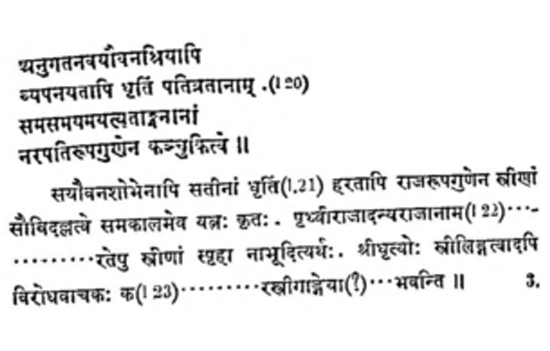
Another instance is, as we’ve already covered, where Prithviraj conducted a surprise night attack on the Abu/Chandravati Kingdom, 12 obviously on horses for want of speed. Is that a feasible proposition for an “immobile fatso”?
Similarly for those who prefer believing the near-contemporary Muslim sources like Abdul Malik Isami’s Futuh-us-Salatin, Hasan Nizami’s Taj-ul-Masir, etc. They mention Prithviraj switching from elephant to horse during battle. Can an “immobile fatso” perform that?
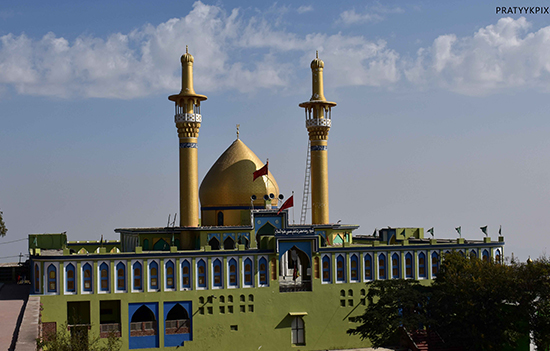 Dargarh Hazrat Meeran Syed Hussain Khigsawar in Taragarh Fort.
Dargarh Hazrat Meeran Syed Hussain Khigsawar in Taragarh Fort.
Citations
1. Prithviraj Vijaya, chapter 10.
2. ibid.
3. Partha Parakrama Vyayoga – by PrahladanaDeva Paramara.
4. Puratan Prabandh Sangraha, Singhi Jain
Granthamala series, Pg 86.
5. Rajasthan Bharti vol 9, Ch. 2, Pg 23-25; Prithviraj Chauhan and his times – R V Somani.
6. Prithviraj Chauhan – a light on the mist in History, Chapter 7.
7. Prithviraj Chauhan – a light on the mist in History, Pg 146.
8. Kharatara-Gachchha-Vrihad-Gurvāvalī, Pg 34.
9. A category of inscriptions set in the memory of
a Kshatriya fallen while protecting Gau-Brahmin).
10. Prithviraj Vijaya, Chapter 9.
11. Prithviraj Vijaya, Chapter 10.
12. Partha Parakrama Vyayoga – PrahladanaDeva Paramara.
About Author Virendra Rathore is a history Enthusiast who has done wide research on the life and times of Prithviraj Chauhan through contemporary sources and has authored a book Prithviraj Chauhan- A Light on the Mist in History.
First
published in www.pragyata.com
and Here
eSamskriti has permission to share on its platform.
Some quotes from Volume 5 of The History and Culture of Indian People
Editorial written by Kulapati K M Munshi (founder of the Bharatiya Vidya Bhavan)
1. “From 1192 A.D. when Chauhan lost the battle of Tarain, till 1301 when his descendant, the heroic Hammiradeva, fell in the battle field, they defied the Sultanate year after year. And so did the Katehrs.” Pg. xvi.
2. “Altogether six inscriptions of Prithviraj’s reign have been discovered with dates between 1177 to 1188. The Kashmiri poet Jayanaka, author of the Prithvi-vijaya, lived under the patronage of Pritviraja.” Pg. 109
3. “After his victory in the battle of Tarain, Prithviraj marched his army to Tabarhindah, and besieged the fort. The commander of the fort Ziya-ud-sin defended his position for 13 months and then capitulated. Thus, the supremacy of the Chahamanas was re-established in Punjab.” Pg. 110
4. “It was a great defect with the Indian chiefs that in their fight with the Muslims they always chose to be on the defensive. The result was that their adversaries, even when they were defeated, could escape annihilation if they could only withdraw from the battle-field. Prithviraj was not free from this drawback”. Pg. 118
Then or now - it pays to have knowledge of the outside world esp. your enemies and try to understand how they think. Next, the defeat could be the result mainly of internal decay, and not merely of external attacks, which were its effect rather than the cause. Pg. 128